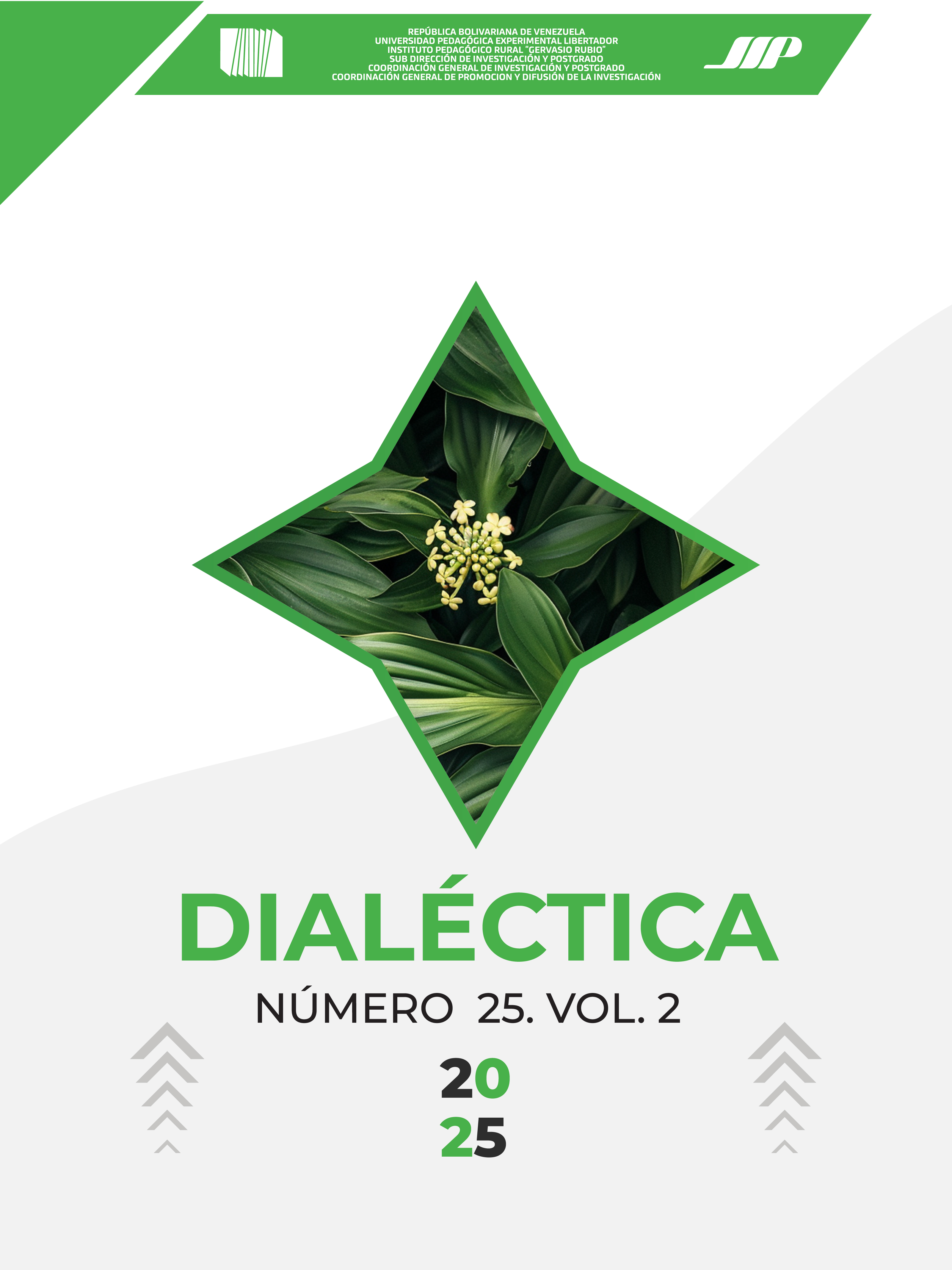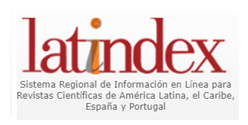AUTISM SPECTRUM DISORDER IN THE CLASSROOM
DOI:
https://doi.org/10.56219/dialctica.v2i25.4022Keywords:
Classroom, Education, Inclusion, Autism spectrum disorderAbstract
Classroom conditions in Colombia as well as in the all-world present particularities that highlight the conditions and characteristics of the students, whether these are socioeconomic, cultural, emotional, environmental, physical, cognitive, psychological and health that require a number of strategies to meet the needs of each one. The Autism Spectrum Disorder in the classroom is a challenge that requires teachers a broad knowledge to face it and be able to lead students through a path of help, collaboration and guidance towards a better quality of life. This article analyses the reality of students with Autism Spectrum Disorder (ASD) and the teachers who support them in the classroom, in light of the definition of autism over time, the most recent studies on the subject, world policies, national initiatives and proposals focused on the management of this condition in the classroom; is presented as an argumentative essay that is the product of the revisions of the topic, which allows us to present to the professional teacher of education in Colombia a contribution to enter into the management of the situation in terms of inclusion in the classroom.
Downloads
References
Autismo. (s/f). Who.int. Recuperado el 9 de marzo de 2025, de https://www.who.int/es/news-room/fact-sheets/detail/autism-spectrum-disorders?form=MG0AV3&form=MG0AV3
Barrera, S. M. R. (2023, abril 19). Autismo en Colombia: “No tenemos estadísticas” - LICA. CONSULTORSALUD. https://consultorsalud.com/colombia-estadisticas-autismo-podcast/?form=MG0AV3&form=MG0AV3
Cabrera, D. (2024, agosto 21). Con proyecto de ley buscan mejorar la atención de las personas con Trastorno del Espectro Autista. La FM. https://www.lafm.com.co/salud/con-proyecto-de-ley-buscan-mejorar-la-atencion-de-las-personas-con-trastorno-del-espectro?form=MG0AV3&form=MG0AV3
Cohmer, B. S. (s/f). “Autistic Disturbances of Affective Contact” (1943), by Leo Kanner. Asu.edu. Recuperado el 9 de marzo de 2025, de https://embryo.asu.edu/pages/autistic-disturbances-affective-contact-1943-leo-kanner?form=MG0AV3&form=MG0AV3
Cortes, M. (2023). La pedagogía como campo disciplinar y profesional en el trabajo educativo con personas autistas: revisión bibliográfica (2010-2020). Universitas Humanística, 91. https://doi.org/10.11144/javeriana.uh91.pcdp DOI: https://doi.org/10.11144/Javeriana.uh91.pcdp
de Expertos en Educación, E. (2015, enero 4). Los distintos tipos de trastorno del espectro autista (TEA): características y formas de intervención en el aula. VIU Colombia. https://www.universidadviu.com/co/actualidad/nuestros-expertos/los-distintos-tipos-de-trastorno-del-espectro-autista-tea
Educación inclusiva en Colombia: un desafío urgente para los docentes. (2025, marzo 8). El Universal. https://www.eluniversal.com.co/colombia/2025/03/08/educacion-inclusiva-en-colombia-un-desafio-urgente-para-los-docentes/?form=MG0AV3&form=MG0AV3
El autismo 70 años después de Leo Kanner y Hans Asperger. El autismo 70 años después de Leo Kanner y Hans Asperger. (s/f).
Hervás Zúñiga, A., Balmaña, N., & Salgado, M. (s/f). Los trastornos del espectro autista (TEA). Pediatriaintegral.es. Recuperado el 9 de marzo de 2025, de https://www.pediatriaintegral.es//wp-content/uploads/2017/xxi02/03/n2-092-108_AmaiaHervas.pdf
Lica - Liga Colombiana de Autismo. (s/f). Recuperado el 9 de marzo de 2025, de https://ligautismo.org/lica/?form=MG0AV3&form=MG0AV3
Los trastornos del espectro autista (TEA). (2017, abril 17). Pediatría integral. https://www.pediatriaintegral.es/publicacion-2017-03/los-trastornos-del-espectro-autista-tea/?form=MG0AV3
No title. (s/f). Unesco.org. Recuperado el 9 de marzo de 2025, de https://unesdoc.unesco.org/ark:/48223/pf0000391758_spa
POR MEDIO DE LA CUAL SE ESTABLECEN LAS DISPOSICIONES PARA GARANTIZAR EL PLENO EJERCICIO DE LOS DERECHOS DE LAS PERSONAS CON DISCAPACIDAD”. (s/f). LEY ESTATUTARIA 1618 DE 2013. Gov.co. Recuperado el 9 de marzo de 2025, de https://www.minsalud.gov.co/sites/rid/Lists/BibliotecaDigital/ride/de/ps/documento-balance-1618-2013-240517.pdf
Revistas ĬbērAM. (s/f). Edu.co. Recuperado el 9 de marzo de 2025, de https://revistas.iberoamericana.edu.co/index.php/
Rico García, I. (2021). Propuesta de intervención psicopedagógica de entrenamiento en habilidades sociales en personas con Trastorno de Espectro Autista. Universidad de Valladolid.
Universidad Autónoma del Estado de Hidalgo. (s/f). Vista de Importancia del entrenamiento de habilidades sociales para mejorar la toma de decisiones y calidad de vida de personas con trastorno del espectro autista. Edu.mx. Recuperado el 9 de marzo de 2025, de https://repository.uaeh.edu.mx/revistas/index.php/atotonilco/article/view/9593/9770
Vista de La educación de las personas con trastorno del espectro autista. (s/f). Edu.co. Recuperado el 9 de marzo de 2025, de https://horizontespedagogicos.ibero.edu.co/article/view/hop.21101/1424
(S/f-a). Unirioja.es. Recuperado el 9 de marzo de 2025, de https://dialnet.unirioja.es/servlet/articulo?codigo=9314978
(S/f-b). Edu.co. Recuperado el 9 de marzo de 2025, de https://especiales.colombiaaprende.edu.co/emociones-conexion-vital/pdf/L2_R1_Mod2_Guia_apoyo_Decreto_1421.pdf
(S/f-c). Www.un.org. Recuperado el 9 de marzo de 2025, de https://www.un.org/esa/socdev/enable/documents/tccconvs.pdf
Downloads
Published
How to Cite
Issue
Section
License

This work is licensed under a Creative Commons Attribution-NonCommercial-ShareAlike 4.0 International License.
La revista Dialéctica conserva los derechos patrimoniales (copyright) de las obras publicadas, que favorece y permite la reutilización de los mismos bajo la licencia Creative Commons Atribución-NoComercial-CompartirIgual 4.0 , por lo cual se pueden copiar, usar, difundir, transmitir y exponer públicamente, siempre que se cite la autoría y fuente original de su publicación (revista, editorial, URL y DOI de la obra), no se usen para fines comerciales u onerosos y se mencione la existencia y especificaciones de esta licencia de uso. Si remezcla, transforma o crea a partir del material, debe distribuir su contribución bajo la misma licencia del original.











